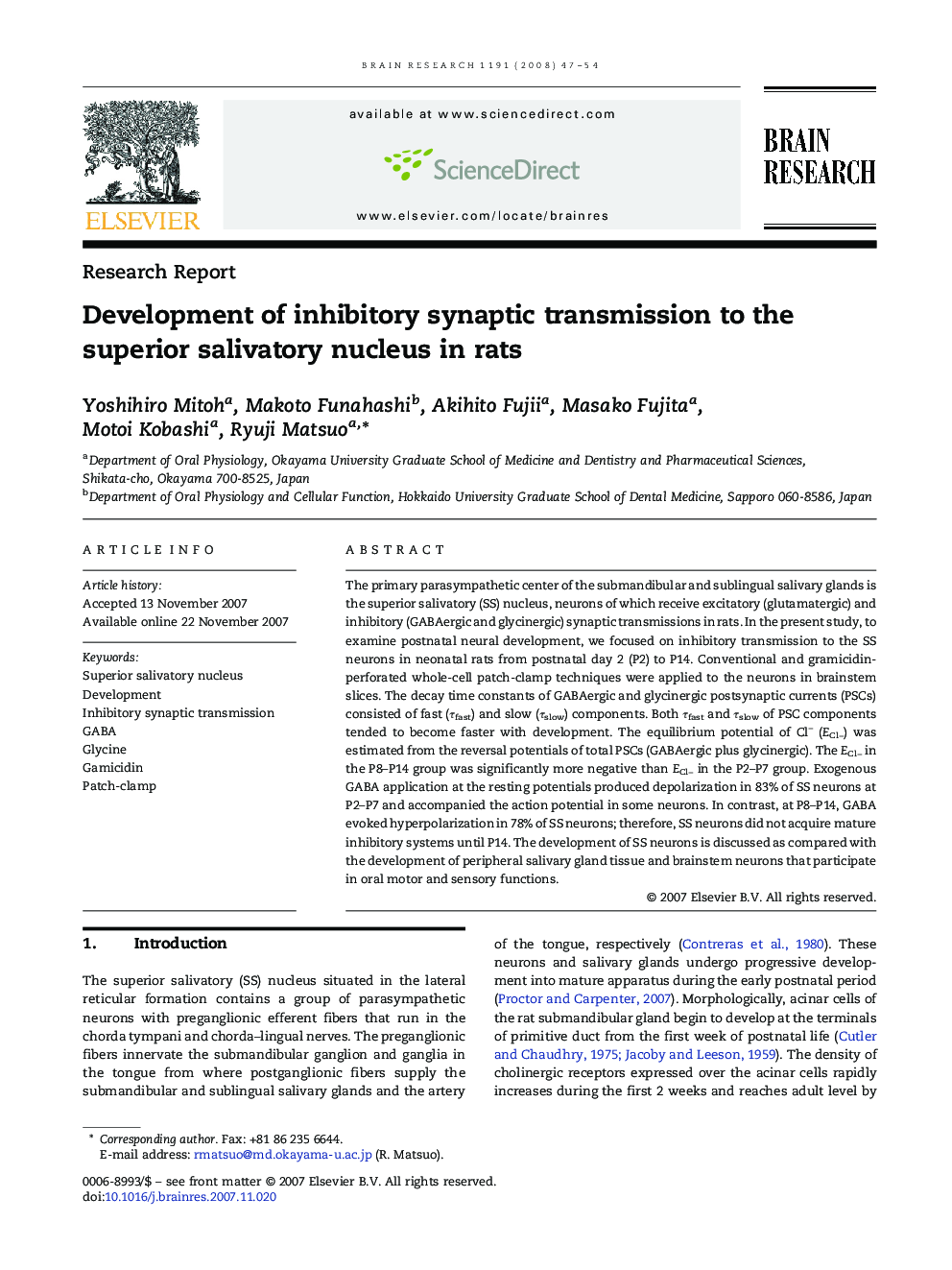| Article ID | Journal | Published Year | Pages | File Type |
|---|---|---|---|---|
| 4330024 | Brain Research | 2008 | 8 Pages |
Abstract
The primary parasympathetic center of the submandibular and sublingual salivary glands is the superior salivatory (SS) nucleus, neurons of which receive excitatory (glutamatergic) and inhibitory (GABAergic and glycinergic) synaptic transmissions in rats. In the present study, to examine postnatal neural development, we focused on inhibitory transmission to the SS neurons in neonatal rats from postnatal day 2 (P2) to P14. Conventional and gramicidin-perforated whole-cell patch-clamp techniques were applied to the neurons in brainstem slices. The decay time constants of GABAergic and glycinergic postsynaptic currents (PSCs) consisted of fast (Ïfast) and slow (Ïslow) components. Both Ïfast and Ïslow of PSC components tended to become faster with development. The equilibrium potential of Clâ (EClâ) was estimated from the reversal potentials of total PSCs (GABAergic plus glycinergic). The EClâ in the P8-P14 group was significantly more negative than EClâ in the P2-P7 group. Exogenous GABA application at the resting potentials produced depolarization in 83% of SS neurons at P2-P7 and accompanied the action potential in some neurons. In contrast, at P8-P14, GABA evoked hyperpolarization in 78% of SS neurons; therefore, SS neurons did not acquire mature inhibitory systems until P14. The development of SS neurons is discussed as compared with the development of peripheral salivary gland tissue and brainstem neurons that participate in oral motor and sensory functions.
Keywords
Related Topics
Life Sciences
Neuroscience
Neuroscience (General)
Authors
Yoshihiro Mitoh, Makoto Funahashi, Akihito Fujii, Masako Fujita, Motoi Kobashi, Ryuji Matsuo,
